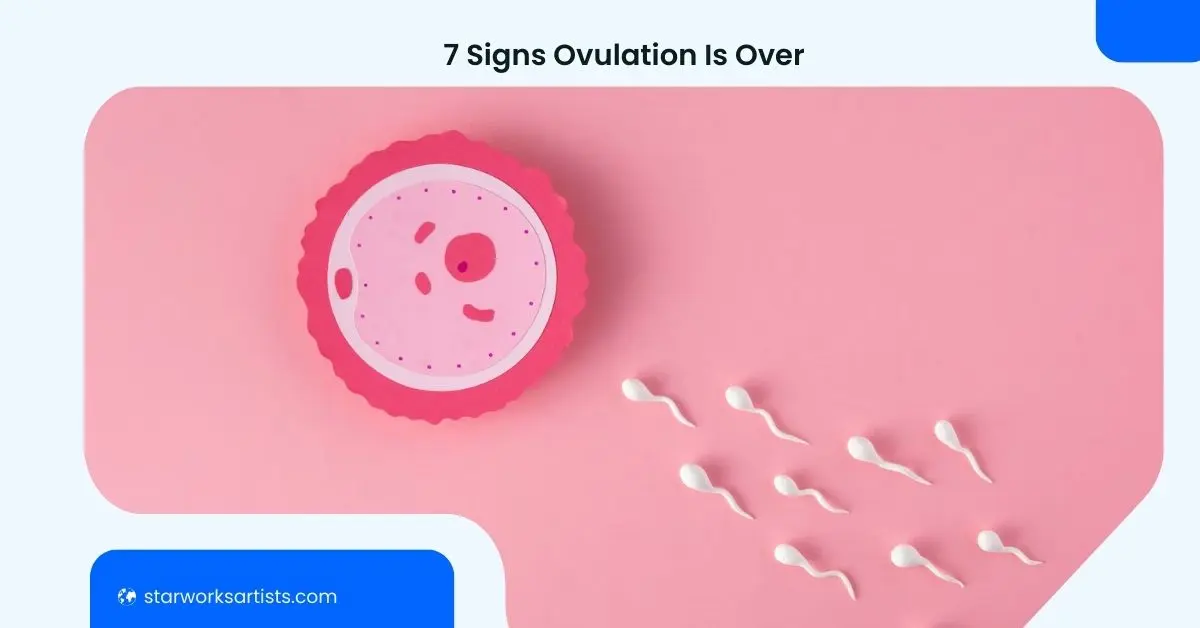Ovulation is a fundamental biological process that lies at the core of the female reproductive system. It is the remarkable event during which a mature egg, also known as an ovum, is released from one of the ovaries, marking the fertile window when conception is possible. This intricate process is orchestrated by a delicate interplay of hormones, primarily driven by the intricate communication between the brain’s hypothalamus, the pituitary gland, and the ovaries themselves.
Key takeaways:
As described by the National Institutes of Health (NIH), “Ovulation is the release of a mature egg from the ovary…it is the midpoint of a woman’s menstrual cycle.” This cyclical phenomenon typically occurs once every 28 days, although the length of menstrual cycles can vary from woman to woman.
The journey towards ovulation is a meticulously choreographed sequence of events. As elucidated by the Centers for Disease Control and Prevention (CDC), “Each month, hormone signals cause an egg to mature and be released from the ovaries.” This process begins with the hypothalamus secreting gonadotropin-releasing hormone (GnRH), which stimulates the pituitary gland to produce follicle-stimulating hormone (FSH) and luteinizing hormone (LH). These hormones, in turn, trigger the growth and maturation of follicles within the ovaries, each containing an immature egg.

As ovulation approaches, estrogen levels rise, prompting the release of LH in a concentrated surge known as the “LH surge.” This surge initiates a chain reaction that culminates in the rupture of the most mature follicle, allowing the egg to be expelled from the ovary and swept into the fallopian tube, where it may potentially be fertilized by a sperm cell.
How Do You Know When You’re Ovulating?
Dr. Aimee Eyvazzadeh, a fertility expert, explains: “Tracking ovulation helps time intercourse for the best chance of conception. The three most reliable markers are luteinizing hormone (LH) surges, basal body temperature shifts, and changes in cervical mucus.”
Ovulation predictor kits detect the LH surge that triggers ovulation 24-36 hours later. Basal body temperature rises slightly after ovulation due to progesterone. Cervical mucus becomes thin, stretchy, and conducive to sperm during the fertile window.
The Centers for Disease Control and Prevention (CDC) advises, “Take your temperature every morning before getting out of bed and look for a pattern of temperature increase.”
How Can You Tell Ovulation Is Over?
While ovulation marks the start of the fertile window, it’s also crucial to identify when ovulation ends and the window closes. Here are some common signs that ovulation has occurred:
Cervical Mucus Changes
“A good way to tell ovulation has ended is when fertile cervical mucus dries up,” says Dr. Kenosha Gleeson, an OB/GYN. During ovulation, cervical fluid is stretchy like raw egg whites. After ovulation, it becomes sticky, dry, or disappears as progesterone rises.
Basal Body Temperature Shift
The rise in basal body temperature after ovulation is called the “temperature shift.” Dr. Gleeson advises, “Look for a sustained temperature rise over 3 days – that’s a reliable sign ovulation occurred.”
As the NIH states, “A woman’s body temperature may rise by only 0.4 to 0.8 degrees F after ovulation.” Tracking BBT over multiple cycles helps identify your unique pattern.
Positive Ovulation Test Followed by Negatives
While a positive ovulation test indicates imminent ovulation, Dr. Eve Feinberg notes that “2-3 days of negative tests after a peak reading can confirm ovulation is over for that cycle.” Levels of LH drop after the egg is released.
Breast Tenderness
“Increased breast tenderness or swelling in the second half of the cycle can signify ovulation occurred,” says Dr. Feinberg. This is caused by rising progesterone levels in the luteal phase after ovulation.
Abdominal Cramping Ends
Some women experience cramping or abdominal twinges around ovulation, known as mittelschmerz. The CDC explains, “Some women experience a minor pain…about 14 days before the start of the next menstrual period.” Once this mid-cycle pain subsides, ovulation may have passed.
Decreased Sexual Desire
During the fertile window, many women report increased libido and sex drive. Dr. Gleeson states, “A noticeable drop in sexual desire after ovulation can indicate the fertile period is over, as estrogen levels decline.”
Progesterone/PdG Rise
The most definitive confirmation of ovulation is detecting a rise in progesterone levels. “After 7-10 days, women can take a urine test to check for the progesterone metabolite PdG,” advises Dr. Feinberg. “Sustained elevated PdG confirms successful ovulation.”
Related: Does Ovulation Make You Tired? Reason Behind Your Tiredness
Conclusions
While individual signs can vary, Dr. Eyvazzadeh recommends “using multiple markers like temperature, LH tests, and cervical mucus” to get an accurate picture of your fertile window each cycle.
Understanding when ovulation starts and ends is key for timing intercourse to maximize conception chances. After ovulation, the window rapidly closes – the egg only survives 12-24 hours if not fertilized.
“Confirming successful ovulation with tools like BBT, ovulation tests and PdG strips provides reassurance and helps plan for the next cycle if needed,” concludes Dr. Gleeson. “Tracking your unique ovulation patterns is invaluable on the journey to pregnancy.”
By being attentive to the signs ovulation has occurred, couples can rest assured they took advantage of their fertile window that cycle. Careful tracking empowers you to understand your body’s cycles for greater reproductive awareness.
FAQ’s
The end of ovulation may bring symptoms like dry cervical mucus, a slight basal body temperature rise, breast tenderness, light cramping, and decreased libido as progesterone rises.
Signs you’re no longer ovulating that cycle include a temperature shift sustained for 3 days, ovulation test going from positive to negative readings, fertile cervical mucus drying up, and rising progesterone/PdG levels.
Count back 12-16 days from when your next period starts, check ovulation test dates for LH peak, note temperature shift on BBT chart, or test for post-ovulation progesterone rise.
The ovulatory phase when the egg is released lasts just 12-24 hours. However, the approximate 6-day fertile window includes the 5 days before ovulation plus the day of ovulation itself.
Ovulation itself – when the egg is released from the ovary – lasts only 12-24 hours. The ripening of the ovarian follicle takes about 2 weeks prior as part of the ovulatory process.
References:
National Library of Medicine (n.d) Physiological Signs of Ovulation and Fertility Readily Observable by Women Available online at: https://www.ncbi.nlm.nih.gov/pmc/articles/PMC6081768/
Better Health Channel (n.d) Ovulation pain Available online at https://www.betterhealth.vic.gov.au/health/conditionsandtreatments/ovulation-pain

